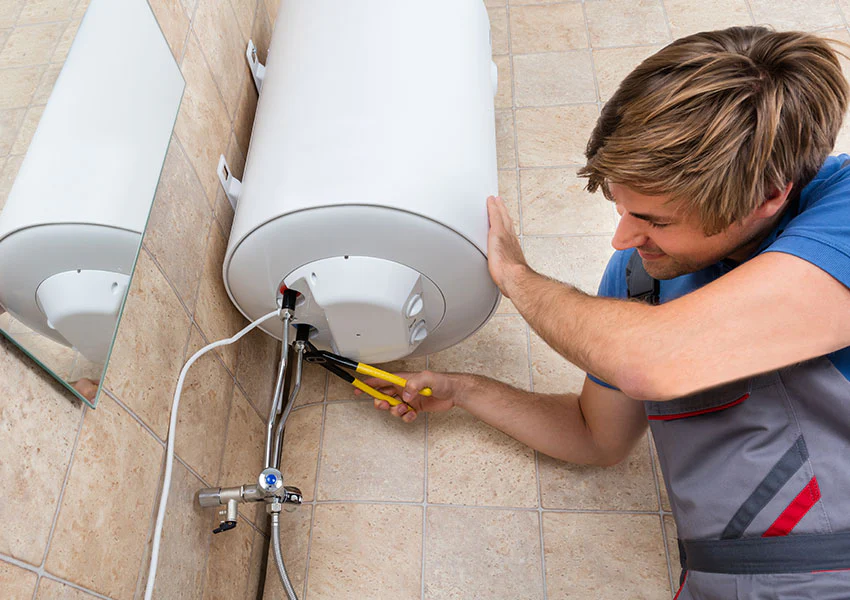Are you on the lookout for ideas involving Tips on Maintaining a Water Heater?

Hot water is crucial for everyday convenience, whether it's for a rejuvenating shower or cleaning meals. To guarantee your warm water system runs successfully and lasts much longer, regular upkeep is vital. This short article gives useful pointers and insights on exactly how to keep your home's warm water system to avoid interruptions and pricey repairs.
Introduction
Keeping your home's warm water system might appear daunting, but with a couple of simple actions, you can ensure it operates efficiently for years to find. This guide covers every little thing from understanding your hot water system to DIY upkeep suggestions and recognizing when to hire expert aid.
Significance of Preserving Your Hot Water System
Routine upkeep not just prolongs the life-span of your hot water system yet also guarantees it runs effectively. Disregarding maintenance can cause decreased effectiveness, higher power costs, and even early failing of the system.
Indications Your Hot Water System Requirements Maintenance
Recognizing when your hot water system requires attention can protect against major problems. Keep an eye out for indications such as irregular water temperature level, weird noises from the heating unit, or corroded water.
Flushing the Water Heater
Purging your water heater gets rid of debris buildup, enhancing performance and prolonging its life.
Checking and Changing Anode Rods
Anode poles stop corrosion inside the storage tank. Evaluating and changing them when worn out is vital.
Complex Problems Calling For Professional Help
Instances consist of major leakages, electric problems, or if your hot water heater is consistently underperforming.
Routine Specialist Upkeep Advantages
Expert upkeep can include detailed inspections, tune-ups, and making certain compliance with security criteria.
Inspecting and Adjusting Temperature Setups
Readjusting the temperature settings guarantees optimum efficiency and safety.
DIY Tips for Maintenance
You can do a number of upkeep jobs on your own to maintain your warm water system in leading condition.
Checking for Leaks
On a regular basis check pipelines and links for leaks, as these can lead to water damage and higher expenses.
Recognizing Your Warm Water System
Prior to diving right into upkeep tasks, it's practical to comprehend the standard parts of your warm water system. Typically, this includes the water heater itself, pipes, anode rods, and temperature controls.
Monthly Maintenance Tasks
Regular regular monthly checks can assist catch minor issues before they escalate.
Testing Pressure Alleviation Valves
Examining the pressure relief valve ensures it works appropriately and protects against excessive pressure accumulation.
Protecting Pipelines
Shielding warm water pipelines minimizes warm loss and can conserve power.
When to Call a Specialist
While DIY maintenance is advantageous, some problems need specialist experience.
Conclusion
Regular maintenance of your home's hot water system is essential for efficiency, long life, and price financial savings. By adhering to these suggestions and understanding when to seek specialist aid, you can make sure a trustworthy supply of hot water without unexpected disruptions.
How to Maintain an Instant Hot Water Heater
Before tinkering with your hot water heater, make sure that it’s not powered on. You also have to turn off the main circuit breaker and shut off the main gas line to prevent accidents. Also turn off the water valves connected to your unit to prevent water from flowing into and out of the appliance. 2. When you’re done, you have to detach the purge valves’ caps. These look like the letter “T” and are situated on either side of the water valves. Doing so will release any pressure that has accumulated inside the valves while at the same time avoid hot water from shooting out and burning your skin. 3. When the purge valves’ caps are removed, you have to connect your hosing lines to the valves. Your unit should have come with three hoses but if it didn’t, you can purchase these things from any hardware or home repair shops. You can also get them from retail stores that sell water heating systems. Read the user’s manual and follow it to complete this task properly. When the hosing lines are connected, open the purge port’s valves. 4. You should never use harsh chemical cleaners or solutions when cleaning your unit. Make use of white vinegar instead. It should be undiluted and you’ll probably use about 2 gallons. 5. Now flush your water heater. This task should probably take about 40 minutes. We can’t give you specific directions for this because the procedure is carried out depending on the type, model and brand of your heater. With that being said, refer to the user’s manual. 6. When you’re done draining the unit, you have to turn off the purge port valves again. Remove the hosing lines that you earlier installed on each of the water valves. Put the valve caps (purge port) back in their respective places and be very careful so as not to damage the rubber discs that are found inside these caps. 7. Now that everything’s back in place, check your user’s manual again to find out how to reactivate your water heating system. 8. Once it is working, turn one of your hot water faucets on just to let air pass through the heater’s water supply pipes. Leave the tap on until water flows smoothly out of it. https://www.orrplumbing.com/blog/2014/september/how-to-maintain-an-instant-hot-water-heater/

I found that page about Water Heater Maintenance Tips You Can't Afford to Forget when doing a lookup on the internet. Do you know someone else who is in to the subject? Why not share it. We appreciate your readership.
Call Today